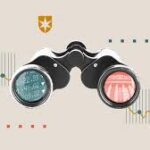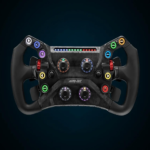In the digital age, where screens illuminate our lives day and night, concerns about the effects of blue light have sparked widespread interest and debate. From discussions on its impact on sleep to its potential harm to eye health, the blue light spectrum has become a topic of fascination and concern. One term often associated with this phenomenon is the “Blue Light Special.” But what exactly does it mean, and is there more to it than meets the eye?
Table of Contents
ToggleWhat is the Blue Light Special
Originating from the marketing strategies of various retailers, the “Blue Light Special” was a promotional tactic employed to attract customers to specific discounted items or sales events. It typically involved flashing blue lights in-store to signal a limited-time offer or a particularly enticing deal. However, this term has taken on a new connotation in the context of technology and health.
Blue Light and Its Sources
Blue light is a type of high-energy visible light found on the blue end of the visible light spectrum. It’s emitted naturally by the sun, but it’s also produced by many artificial sources, including smartphones, computers, tablets, and LED lighting. Concerns have been raised about the potential adverse effects of prolonged exposure to blue light, particularly from digital devices, on various aspects of health.
Debunking Myths Surrounding Blue Light
Blue Light Leads to Blindness
One of the most common misconceptions about blue light is that it can cause blindness. While excessive exposure to blue light may contribute to eye strain and fatigue, there’s no scientific evidence to suggest that it directly causes blindness. However, it’s essential to take precautions to reduce eye strain, such as using blue light filters or taking regular breaks from screen time.
Blue Light Disrupts Sleep Patterns
Blue light exposure, especially in the evening, has been linked to disruptions in the body’s natural sleep-wake cycle. However, not all blue light is detrimental to sleep. Research suggests that exposure to natural blue light during the day can actually improve mood, alertness, and overall well-being. It’s the artificial blue light emitted by screens in the evening that may interfere with sleep quality.
All Blue Light is Harmful
While excessive exposure to blue light, particularly from digital devices, can have adverse effects on health, not all blue light is inherently harmful. Blue light is essential for regulating circadian rhythms, boosting attention and cognitive function, and elevating mood during the day. The key lies in striking a balance between exposure to natural and artificial blue light and implementing strategies to minimize potential harm.
The Reality of Blue Light Protection
Despite the myths surrounding blue light, there’s no denying that excessive screen time can strain the eyes and disrupt sleep patterns. To mitigate these effects, consider the following tips:
Use blue light filters or screen protectors on digital devices.
Limit screen time, especially before bedtime.
Take regular breaks to rest your eyes and reduce eye strain.
Opt for warmer, less intense lighting in the evening to promote relaxation and better sleep.
Conclusion
The “Blue Light Special” may have originated as a retail marketing tactic, but its significance extends far beyond discounted deals. Understanding the realities and myths surrounding blue light is crucial for maintaining optimal eye health and overall well-being in today’s digital age. By adopting healthy habits and utilizing technology responsibly, we can harness the benefits of blue light while minimizing its potential drawbacks.










